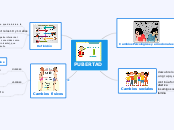Topic flotante
TUTORIAS
The Solar System is the gravitationally bound system of the Sun and the objects that orbit it, either directly or indirectly. Of the objects that orbit the Sun directly, the largest are the eight planets, with the remainder being smaller objects, the dwarf planets, and small Solar System bodies.
OBJETIVOS
Neptune is about the size of Uranus and is known for supersonic strong winds.
Neptune is far out and cold.
The planet is more than 30 times as far from the sun as Earth.
Neptune was the first planet predicted to exist by using math, before it was visually detected. Neptune is about 17 times as massive as Earth and has a rocky core.
DE LA IDENTIDAD, SENTIDO Y ÉTICA
How long does it take for Neptune to go around the sun?
DESARROLLO DE HABILIDADES
A planet's day is the time it takes the planet to rotate or spin once on its axis.
Write down Neptune's day measured in Earth days.
APOYO ACADÉMICO
UNESCO
PROGRAMA NACIONAL
Jupiter is a giant gas world that is the most massive planet in our solar system.
Its swirling clouds are colorful due to different types of trace gases.
And a major feature in its swirling clouds is the Great Red Spot, a giant storm more than 10,000 miles wide. It has raged at more than 400 mph for the last 150 years, at least.
Jupiter has a strong magnetic field, and with 75 moons, it looks a bit like a miniature solar system.
LINEAMINETOS
MEJORAR RENDIMIENTO ACADEMICO
GESTIÓN DE PROCESOS
How long does it take for Jupiter to go around the sun?
DIMENSION FILOSOFICA, ACADEMICA Y ORGANIZACIONAL
A planet's day is the time it takes the planet to rotate or spin once on its axis.
Write down Jupiter's day measured in Earth days.
How many Earth days
FORMACIÓN INTEGRAL
Position
PROGRAMA INSTITUCIONAL ITMAZ
Mars is a cold, desert-like place covered in dust. This dust is made of iron oxides, giving the planet its iconic red hue.
Mars shares similarities with Earth: It is rocky, has mountains, valleys and canyons, and storm systems ranging from localized tornado-like dust devils to planet-engulfing dust storms.
APOYOS ECONÓMICO A ALUMNOS
INFORMACIÓN, DIAGNOSTICO, EVALUACIÓN DE RESULTADOS, REPORTE
Mars has two small moons.
Name these moons.
Moon name
ASIGNACION DE TUTORADOS
How long does it take for Mars to go around the sun?
How many days
CAPACITACION INICIAL
A planet's day is the time it takes the planet to rotate or spin once on its axis.
Write down Mars's day measured in Earth days.
PROGRAMA ESTATAL
Earth is a water world, with two-thirds of the planet covered by oceans.
It's the only world known to harbor life.
Earth's atmosphere is rich in nitrogen and oxygen.
Its name originates from 'Die Erde,' the German word for 'the ground.'
Earth may once have had two moons, nowadays it has just one.
OTROS
PREPARATORIA JOSE VASCONCELOS
COLEGIO DE BACHILLERES DE SINALOA
UAS
A planet's day is the time it takes the planet to rotate or spin once on its axis.
Write down the Earth's day in hours.
MARCO DE CONVIVENCIA ESCOLAR SINALOA 2014
Our Solar System has eight “official” planets which orbit the Sun.
Each planet is at a different distance from the sun. Name its position.
MEJORA CONTINUA DE LA CALIDAD EDUCATIVOA
EVITAR EL ACOSO ESCOLAR









